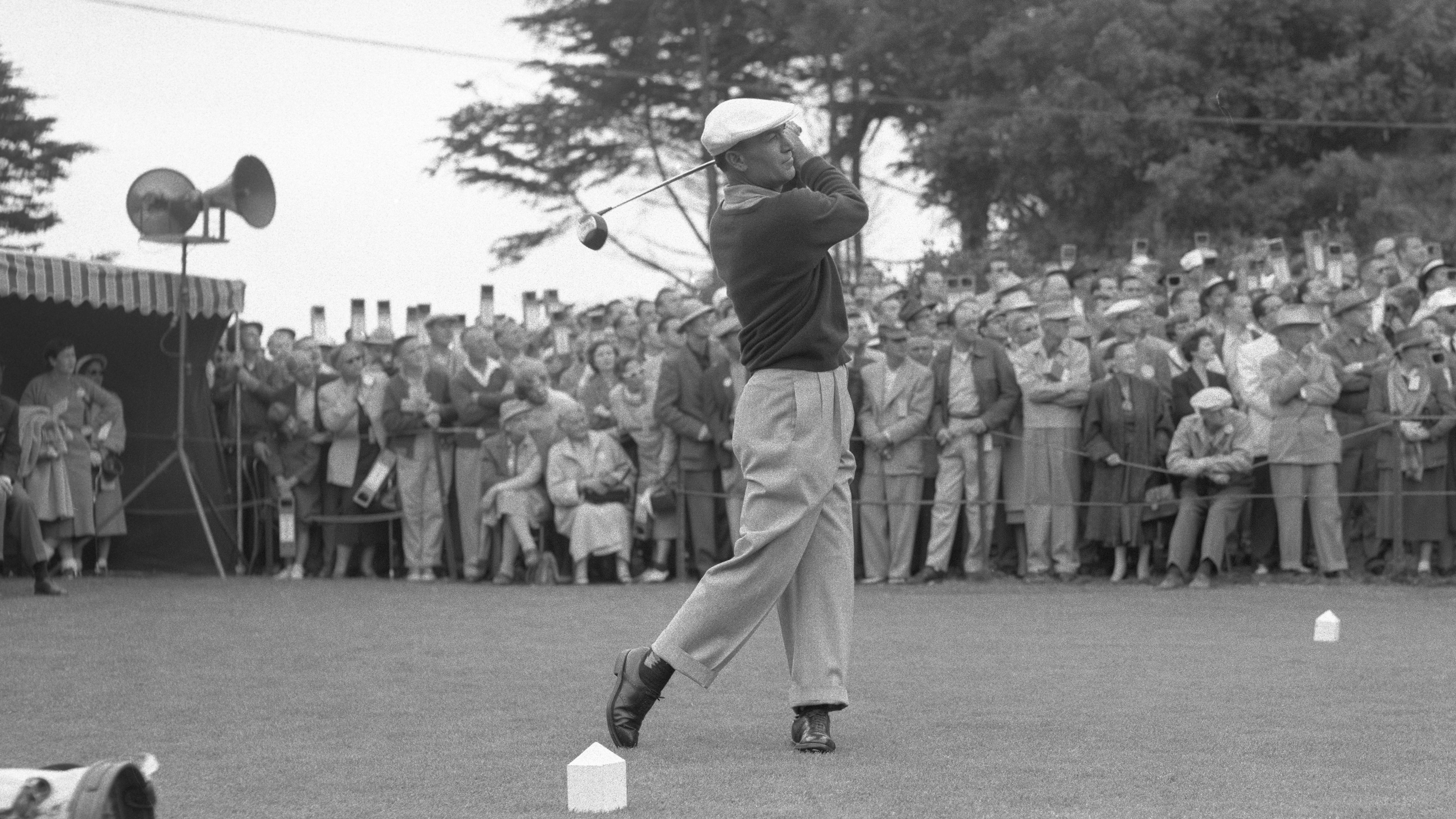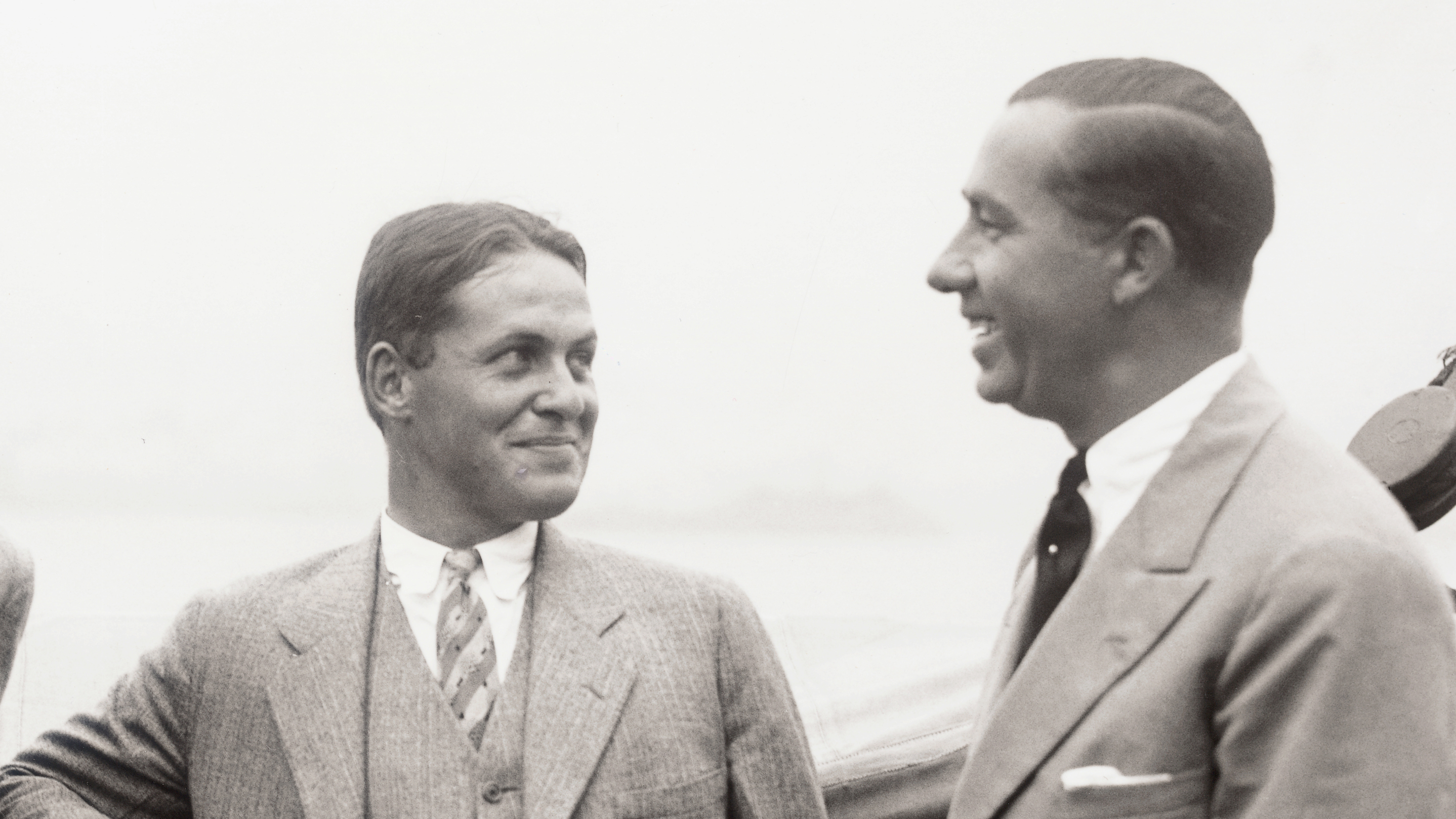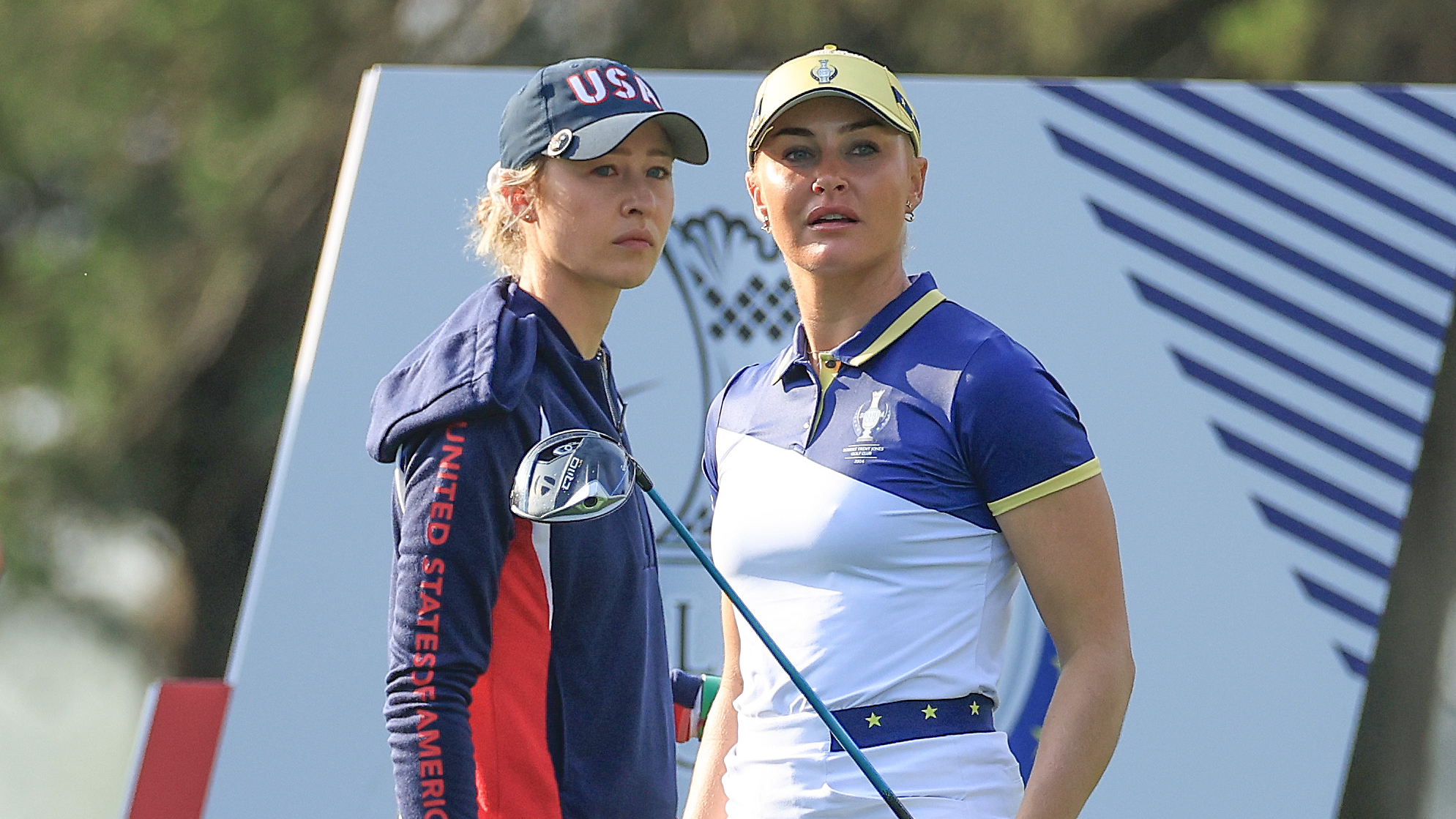How Far Did Old Tom Morris Drive The Golf Ball?
Old Tom Morris became a golfing legend in the second half of the 19th century, but how far could he hit the golf ball?


Surprisingly enough, there’s no shot tracer or other analytical data available on Old Tom Morris’ driving distances through the mid part of the 19th century. Trying to ascertain how far he hit a golf ball is, therefore, a little more challenging than having a quick look at the stats on his PGA Tour profile page.
Old Tom’s professional career began in St Andrews as a young apprentice to the great Allan Robertson. The pair were a formidable partnership in challenge matches from the 1840s when Tom was in his 20s. Robertson was a "featherie" ball maker and Old Tom was trained in that discipline. A featherie was a leather ball stuffed with “a hat” full of feathers.
Robertson and Morris would have used featheries on the links of St Andrews and the other courses of East Scotland where the pair earned the nickname of “The Invincibles” for their prowess and competitive record.
The featherie ball could travel around 175-180 yards in standard conditions, but conditions on the links of 180 years ago were seldom standard. If the ground was hard, the ball would roll on as it does today – with a vicious Northeast Fife wind at his back, Old Tom would have been able to propel a drive well over 200 yards. In 1836, a Frenchman who taught at Madras College called Samuel Messieux apparently hit a ball 361 yards across the Elysian Fields at St Andrews. There must have been a howling wind behind for that one!
Old Tom would have increased his driving distance quite significantly when he made the transition from the featherie ball to the gutta percha or "guttie" ball. When Allan Robertson spied Old Tom playing a guttie on the links of St Andrews, a threat to the featherie business, the younger man was fired on the spot.
Made from the dried resin of a Malaysian tree, gutties performed better than a featherie. They travelled a little further, they bounced more too, and rolled out well.
Playing the guttie, Old Tom would have been able to hit the ball somewhere around the 200-yard mark without other variables included. He wasn’t particularly renowned as a powerful player. His great rival Willie Park Snr was known as a more aggressive hitter of the ball and probably had a few yards on Old Tom. When he won his last Open in 1867 (at the age of 46), Old Tom used a club called a ‘driver putter’ to great effect. It kept the ball low under the wind and generated a good amount of run.
Get the Golf Monthly Newsletter
Subscribe to the Golf Monthly newsletter to stay up to date with all the latest tour news, equipment news, reviews, head-to-heads and buyer’s guides from our team of experienced experts.

Old Tom Morris and his son Young Tommy
Old Tom’s son, Young Tom Morris was an excellent striker of the ball and would certainly have been able to outhit his father as he developed his skills. Young Tom won The Open four times in a row between 1868 and 1872 and, for that spell was undoubtedly the best golfer in the land.
He set a number of records and was known for his skilful, powerful striking. In the 1870 Open, on the first hole at Prestwick, he made a three. That might not seem particularly incredible, but it does when you consider the hole was 578 yards long – He holed his third stroke from around 200 yards out.
How far did Old Tom Morris drive the ball? Well, as we’ve seen, it very much depended on the ground and the weather conditions and it depended on whether he was using a featherie or a guttie ball. A reasonable estimate would be that, in flat calm conditions with a standard amount of run on the links, he would have been able to hit a featherie around 180 yards and (later) a guttie, probably, just a little over 200 yards.
Fergus Bisset writes extensively about the history of the game. He has also worked with Golf Monthly to produce a podcast series. Called 18 Majors: The Golf History Show it offers new and in-depth perspectives on some of the most important moments in golf's long history. You can find all the details about it here. This includes stories of Old and Young Tom Morris and their impact on the game and the, specifically, The Open Championship.

Fergus is Golf Monthly's resident expert on the history of the game and has written extensively on that subject. He has also worked with Golf Monthly to produce a podcast series. Called 18 Majors: The Golf History Show it offers new and in-depth perspectives on some of the most important moments in golf's long history. You can find all the details about it here.
He is a golf obsessive and 1-handicapper. Growing up in the North East of Scotland, golf runs through his veins and his passion for the sport was bolstered during his time at St Andrews university studying history. He went on to earn a post graduate diploma from the London School of Journalism. Fergus has worked for Golf Monthly since 2004 and has written two books on the game; "Great Golf Debates" together with Jezz Ellwood of Golf Monthly and the history section of "The Ultimate Golf Book" together with Neil Tappin , also of Golf Monthly.
Fergus once shanked a ball from just over Granny Clark's Wynd on the 18th of the Old Course that struck the St Andrews Golf Club and rebounded into the Valley of Sin, from where he saved par. Who says there's no golfing god?
-
 RBC Heritage 2025 Tee Times - Round Three
RBC Heritage 2025 Tee Times - Round ThreeJustin Thomas leads going into the weekend at the RBC Heritage, with the American searching for a first victory since the 2022 PGA Championship
By Matt Cradock
-
 Meet The 8 Amateurs Playing In The Chevron Championship
Meet The 8 Amateurs Playing In The Chevron ChampionshipThe Chevron Championship includes eight amateurs – here are the details of the rising stars and how they reached the first women’s Major of the year
By Mike Hall
-
 Quiz! How Much Do You Know About Ben Hogan?
Quiz! How Much Do You Know About Ben Hogan?Ben Hogan was one of the greatest golfers in the history of the game. He was a brilliant swinger of the club and is an icon of the sport. How much do you know about him? Test yourself here…
By Fergus Bisset
-
 Quiz! Golf In The Roaring 20s – How Much Do You Know About Walter Hagen and Bobby Jones?
Quiz! Golf In The Roaring 20s – How Much Do You Know About Walter Hagen and Bobby Jones?Walter Hagen and Bobby Jones were the standout star golfers of the 1920s. How much do you know about their golfing careers? Test yourself with this quiz
By Fergus Bisset
-
 6 Key Takeaways From My Solheim Cup Experience
6 Key Takeaways From My Solheim Cup ExperienceOur Women's Editor Alison Root reflects on the 2024 Solheim Cup
By Alison Root
-
 What Does Ham-And-Egged-It Mean In Golf?
What Does Ham-And-Egged-It Mean In Golf?Golf is full of quirky phrases and, when it comes to match play, you may hear this particular phrase being used frequently...
By Matt Cradock
-
 What Is The Most Played Driver At The Solheim Cup 2024?
What Is The Most Played Driver At The Solheim Cup 2024?24 of the world's best female golfers are squaring off against each other this weekend in Virginia, but what drivers are on display?
By Joe Ferguson
-
 Stepped Irons And Spice Girl Wedges: Linn Grant's Solheim Cup High Notes
Stepped Irons And Spice Girl Wedges: Linn Grant's Solheim Cup High NotesMaking her second Solheim Cup appearance, the Swedish star is perfectly in tune with her game thanks to her dialled in equipment
By Alison Root
-
 Will Maja Stark's New Putter Spark Solheim Cup Success?
Will Maja Stark's New Putter Spark Solheim Cup Success?Maja Stark will mark her second Solheim Cup appearance for team Europe using a new Ping putter. Here are all the details...
By Alison Root
-
 Why Leona Maguire's Three Fairway Woods Could Power Her To Solheim Cup Glory
Why Leona Maguire's Three Fairway Woods Could Power Her To Solheim Cup GloryIreland's Leona Maguire relies on her fairway woods for success. Here's the inside story on the clubs in her bag...
By Alison Root